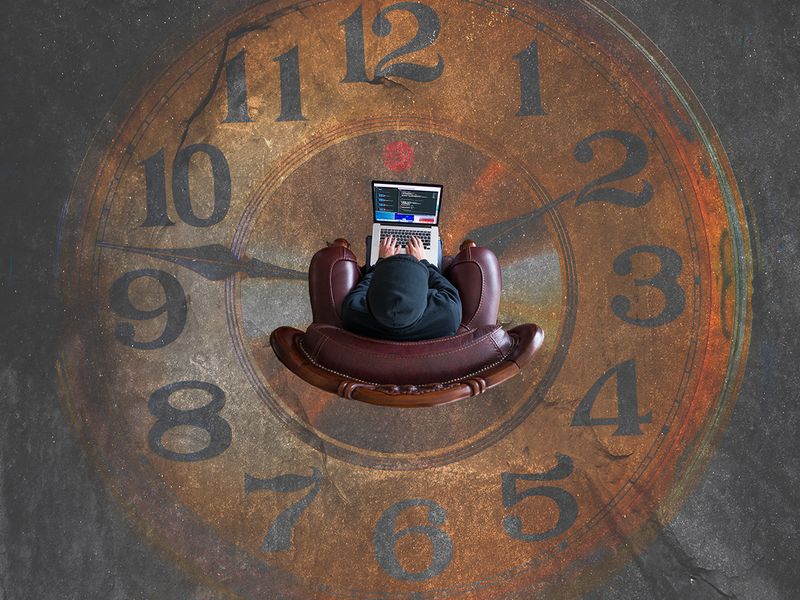
Time. Everything to do with the European Union takes time. Nothing happens quickly. And by its very nature, getting all 27 members of the block to agree to new initiatives or programmes is a long and slow process. Even time itself is time-consuming.
In the early hours of the last Sunday in March, European nations traditionally put their clocks an hour forward. The reverse is true on the last Sunday in October. But at least now, with most people forgoing wrist watches for phones, the time change should be mostly automated.
But it’s still a bureaucratic mess and, yes, Brussels and its eurocracy is based on bureaucratic messes.
It’s almost five years since the EU first mooted a proposal to end the seasonal shifts of springing forward, falling back and hour. And, as is often the case with so much proposed by Brussels or the member states, the proposal to abolish the clock changes is painstakingly slow.
Twice-yearly time change routine
The European Commission, the cabinet-like structure that oversees the day-to-day running of the block, first suggested doing away with the twice-yearly time change routine in September 2018.
The suggestion came after a public consultation process — yes, that in itself, took quite a while to organise — where more than 4 million Europeans clicked and wrote to officials to abolish the process.
But, of course, the European Commission doesn’t have the political power to do as it suggests. The former European Commission President Jean-Claude Juncker had promised to end the practice by the end of his mandate in 2019.
The European Parliament — made up of directly elected MEPs, took up the case, and it was approved a little more than six months later.
Since then, the issue has stalled. Juncker’s time came and went too.
The delay hasn’t as much to do with bureaucracy moving at a snail’s pace, but more to do with the fact that things have been a little busy in Europe since then.
A perfect metaphor
First off, the EU was concerned with that small matter of Brexit. Indeed, one of the main complaints that the Brits had in making the case for leaving Europe was that things took too long to happen. And the clock change proposal is a perfect metaphor for that.
No sooner had that matter of the Brits leaving being tied up, then along came Covid. For the best part of two years, the European Commission, the European Parliament and the European Council of Ministers — the group that represents the political leadership of each member state — were tied up with simply saving people’s lives and dealing with the greatest public health crisis since the Black Death halved the population of Europe in the Middle Ages.
And then there was the focus on recovery. And when it came to actually being able to get down to other unfinished business such as those clocks, Ukraine kicked off. And that, along with the largest refugee crisis since the end of the Second World War, has kept the EU machines and its functionaries rather busy.
The practice of switching clocks is called Daylight Saving Time (DST) — a convention that began in October 1916. The German Empire was at war and its factories needed to produce more bombs and bullets. Turning the clock back an hour helped its munitions factories produce more without having to burn extra coal to keep lights on.
It was an idea that quickly caught on. Britain copied the idea, so too the United States, and so too many European nations. By the time the Second World ended in 1945, the practice of DST was largely abandoned, with the nations of Europe reverted to the same time system as before 1916.
That should have been that — except for the Energy Crisis of the early 1970s that meant any measure to reduce oil consumption was a good idea. And back came DST. It’s stuck ever since.
There might be a will to change — but it’s not going to end any time soon. In the meantime, there are anomalies that individual nations have tried to curtail — without success. Take Spain, as an example.

The anomaly continues
Look at the map of western Europe and Spain sits in the geographic north-south block as the UK, Ireland, Portugal and the Spanish Canary Islands to the west of Morocco.
But while the UK, Ireland and Portugal rest in the same natural timezone, Spain itself rests within the central Europe block.
The reason for this is highly political. With Hitler coming to power in Germany and lending his bombers and military advisers to assist General Fransicso Franco and his Nationalist forces seize power in a bloody three-year civil war in Spain, the new leader in Madrid ordered clocks to run on Berlin time.
Ironically, the Canary Island, where Franco began his revolution, remains an hour behind Madrid.
The anomaly means that Madrid keeps the same time zone as Warsaw, nearly 3,000 kilometres away.
Right now, the best case scenario is that DST will be reformed — if not outright abandoned — by some time in 2025. Why so long?
Well, the switch would mean that things like train timetables and airline schedules would need to be adjusted. That all costs money, but with inflation now being a thorn in the side of EU economies, spending money on new scheduling isn’t a priority. But, of course, only time will tell …








